

I arrive in Palenque about noon, which is
not the best time to arrive at Palenque. It was a sunny tropical
day and very hot, and I worked up a good sweat walking around
and up and down the steps of some large temples. The way Palenque
is maintained is impressive; while Tikal and Copan had just enough
jungle cleared to make the ruins accessible, Palenque had large
open areas cleared and maintained in a park-like setting, making
it easier to appreciate the place as a former city.
<>Palenque was first occupied around
100 BC and reached its peak around 600 to 700 AD. It went into
rapid decline after a war with a rival Mayan city and was probably
abandoned by 900 AD. It was rediscovered in the late 18th century
and explored and excavated in the 19th and 20th century. Many
buildings and at least one tomb are still being excavated and
restored.
Now for a whole lot of Palenque pictures without a lot of narrative.
First up is the Templo de la Calavera (Skull) and a close up of
the fierce looking rabbit or deer skull carved on top:</>


Next are pictures of the Templo de las Inscripciones taken from northwest of the temple, in front of (north) of the temple, and from El Palacio:



Some views of El Palacio with pictures taken from the Templo de la Calavera, another from northwest of it, a side view taken from southwest of El Palacio, and last a shot of El Palacio and the Templo de las Inscripciones taken from the Templo de la Cruz:




More of El Palacio; the tower in El Palacio, courtyards and friezes in El Palacio:

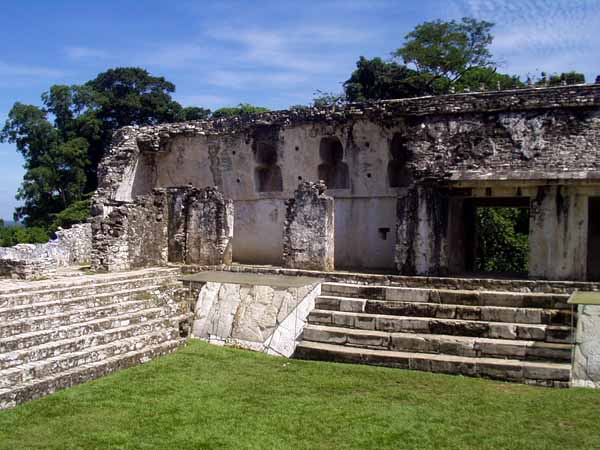


Some of the halls and rooms in El Palacio:





Following a trail along a river bordering Palenque is the Bello Relieve, one of Palenque's temples still surrounded by jungle. I took some pictures inside but they didn't come out well:

Next up are two views of the Templo de la Cruz, me on the Templo de la Cruz, and a relief at the top:


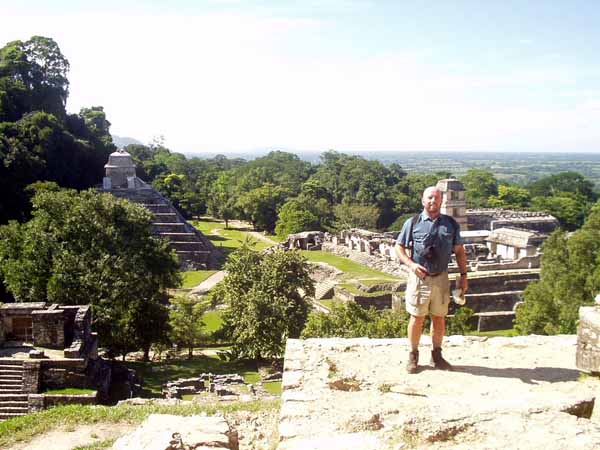

Near the Templo de la Cruz is the Templo de la Sol. The first picture is the Templo del Sol and the adjacent Templo XIV as seen from the Templo de la Cruz. After that is a front view of the Templo del Sol, and the relief inside:



Also near the Templo de la Cruz is the Templo de la Cruz Foliado (Foliated Cross) with an elaborate relief inside. In the first picture I have no idea who that is standing in the entrance; sometimes I couldn't get a tourist-free shot. Sorry I couldn't do a better job on any of the reliefs; if you study this one till your head hurts you can sort of make out some strange looking characters:



From the top of the Templo de la Cruz Foliado is a view of the Templo de la Sol and part of the Templo de la Cruz with El Palacio in the background:

Near the group of temples is the obligatory Mayan ball court:

In the forest behind the temples are some excavations and restorations in progress. I couldn't get a good shot of this building, I think it was Templo XVII, but liked this relief and the example of a Mayan window:
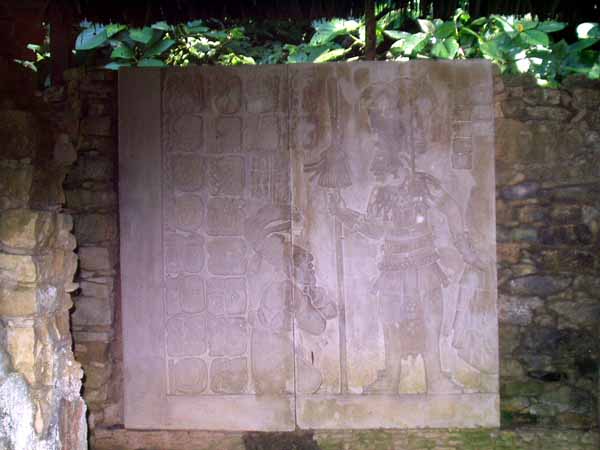

This is Templo XIX and restoration work going on inside:


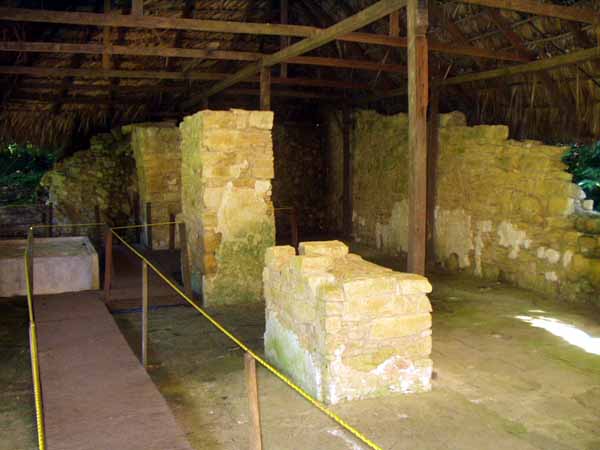
This was also a restoration in Templo XIX. I'm not sure what the original frieze looked like, I'm guessing it was two people kneeling at the feet of somebody important. In its present form it kind of looks like part of an obscene Picasso. Maybe that's just me:

Templo XX, which has only been explored by a remote camera lowered through a shaft into the burial chamber inside. Evidently the chamber had not been thoroughly looted, inside were frescos, jade, sealed vases and bones. The shaft was resealed until the temple can be properly excavated and restored:


Back onto the main complex, these structures are Grupo Norte, first as seen from the top of the Templo del Conde and then from the front. The third picture is a relief on the side of Grupo Norte:



Templo del Conde, Temple of the Count, named after Count de Waldeck, who lived on top of this pyramid from 1831 to 1833. The count wrote a book on Palenque complete with inaccurate drawings meant to make Palenque resemble one of the ancient Mediterranean civilizations:

Late in the day I walked to the less restored buildings called Group C. The walk was mostly interesting for the setting. The waterfall was next to what looked like a large plaza or foundation.



My final pictures taken late in the day were of Groups 1 and 2, mostly notable for the trees growing out of the remains of buildings. Sort of like the Preah Khan in Angor Cambodia, but not nearly as impressive:


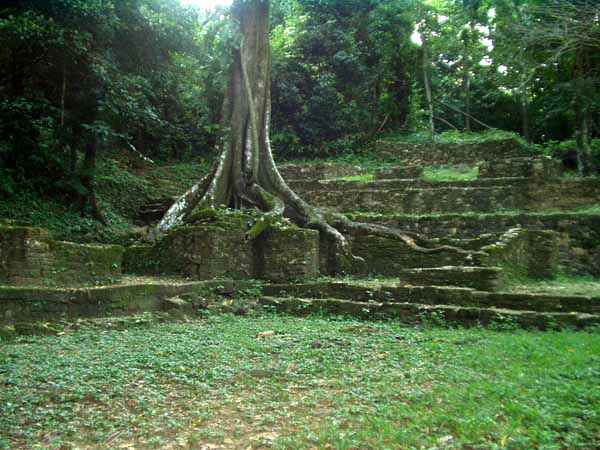
Back in new Palenque I couldn't find much going on, even though it was Friday night and October 31. I made an early night of it and the next day caught the 9:30 bus to San Cristobal de las Casas